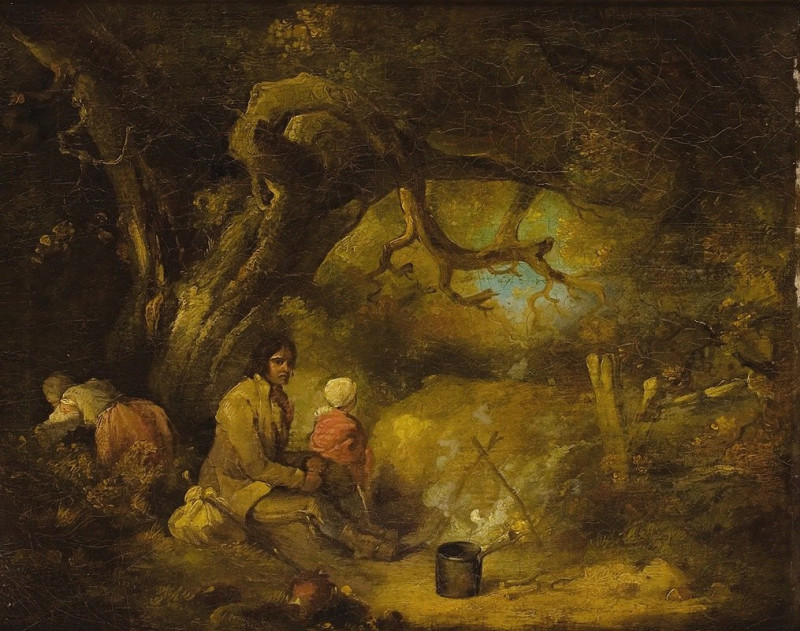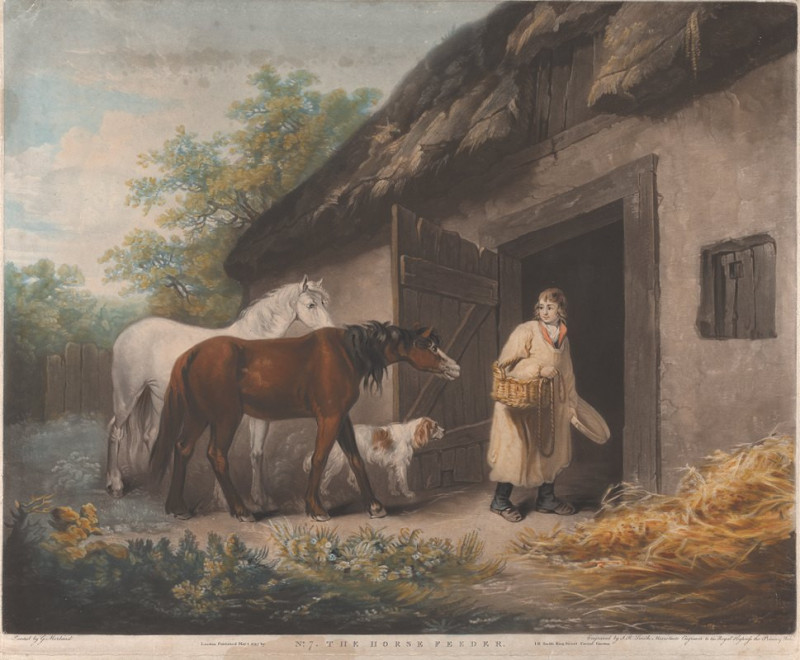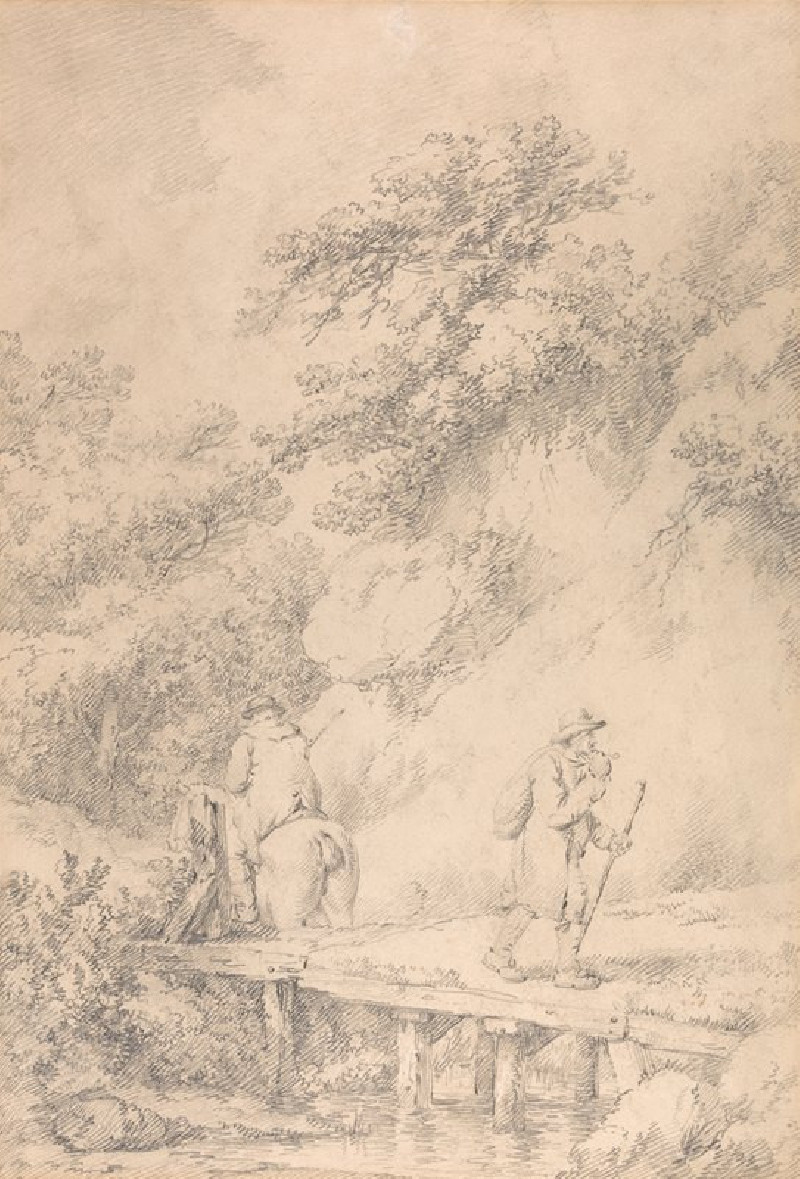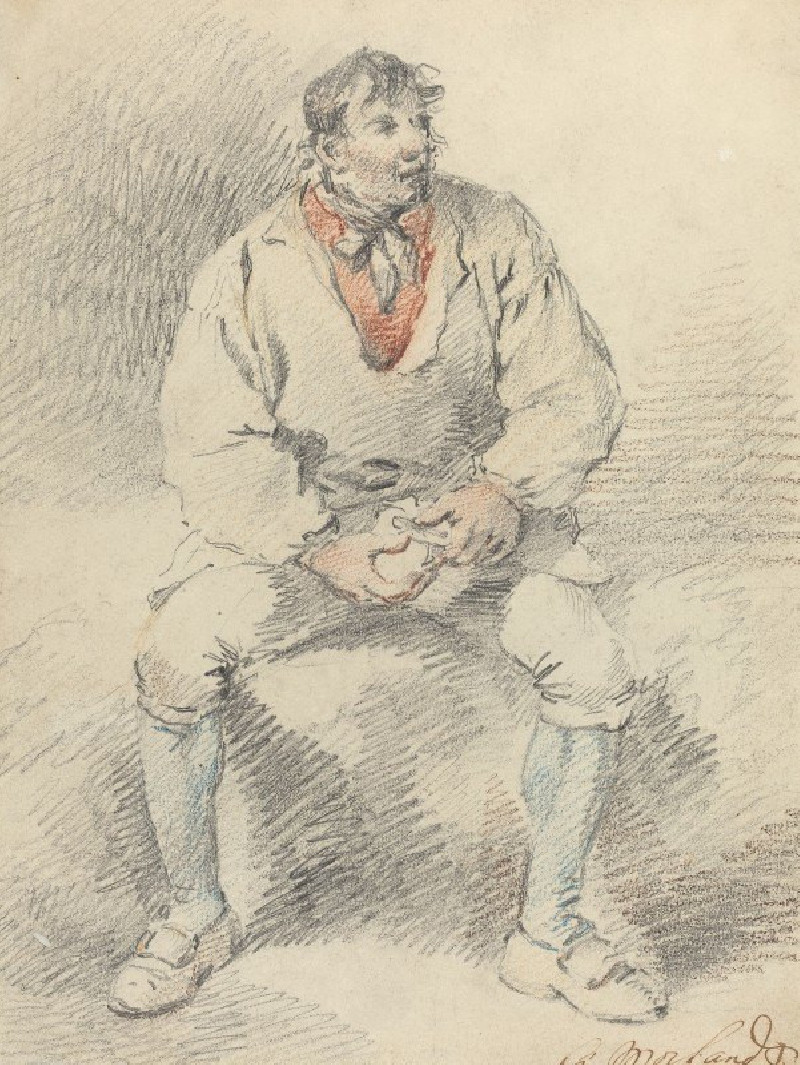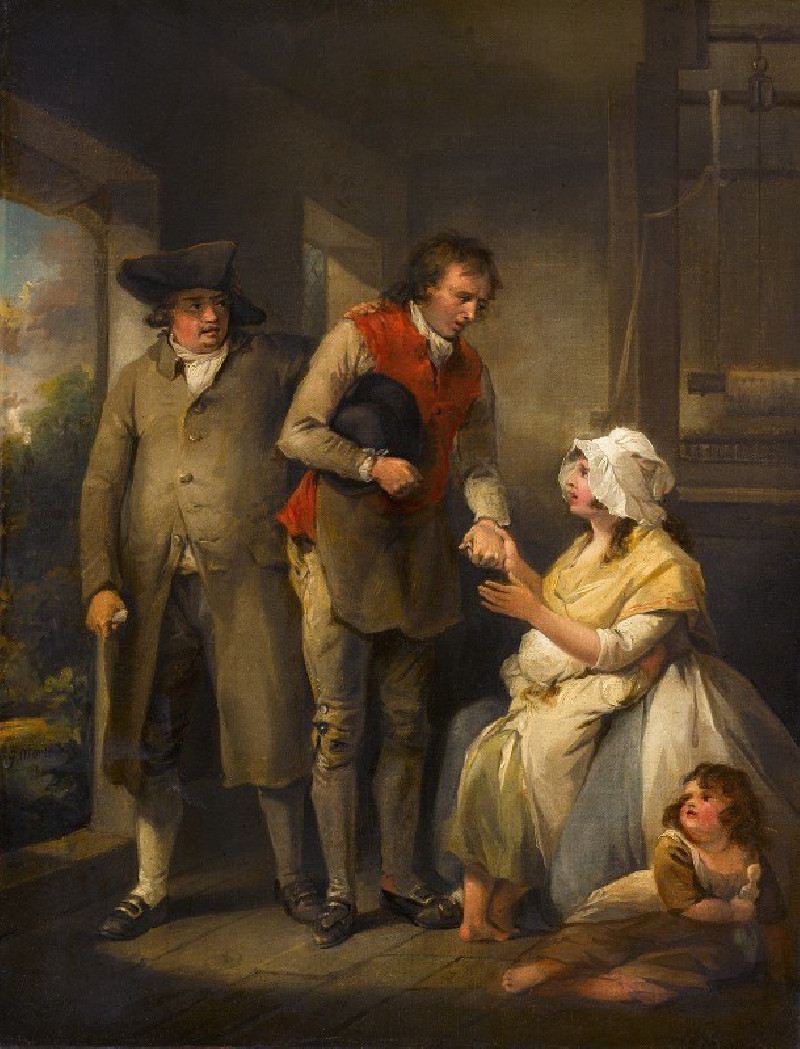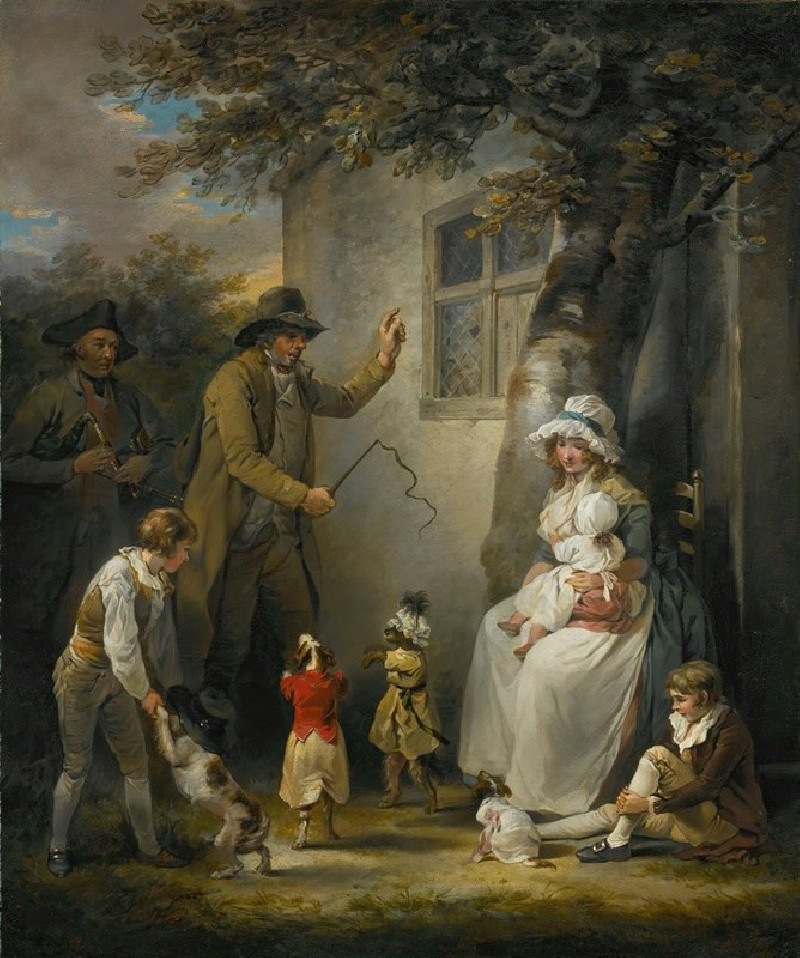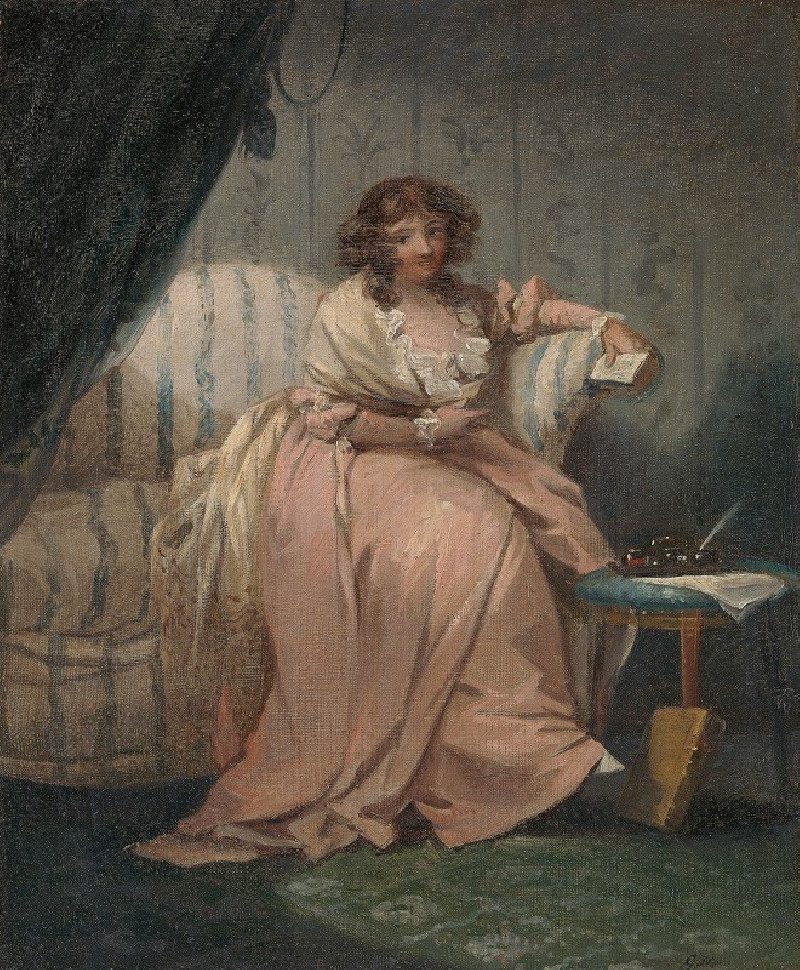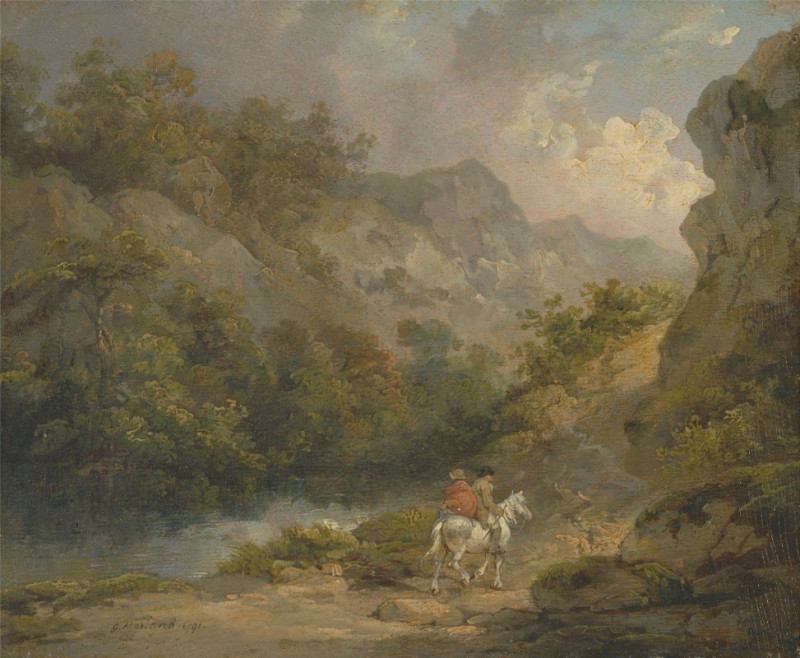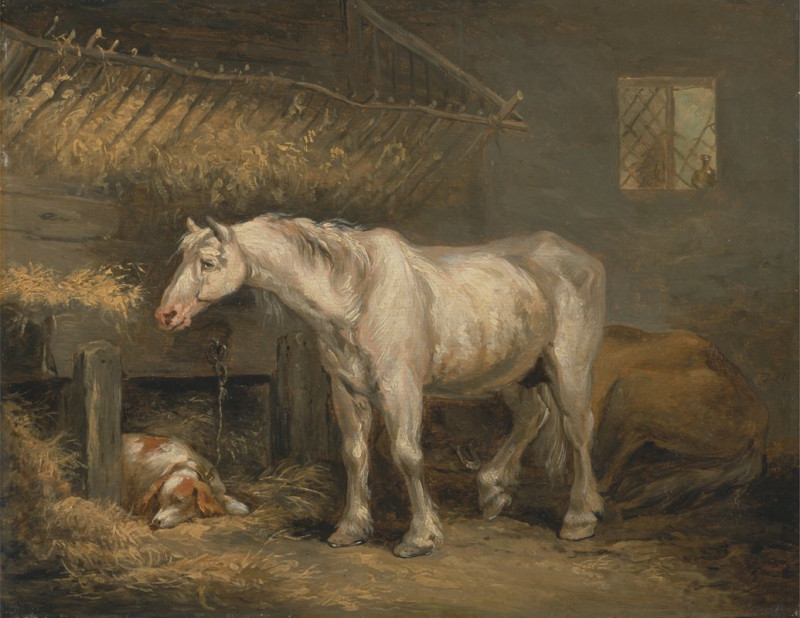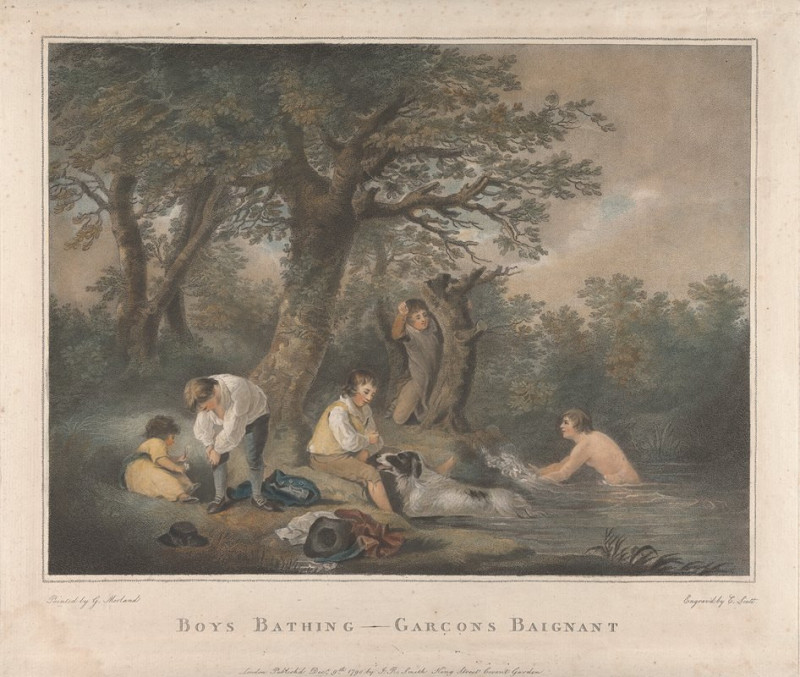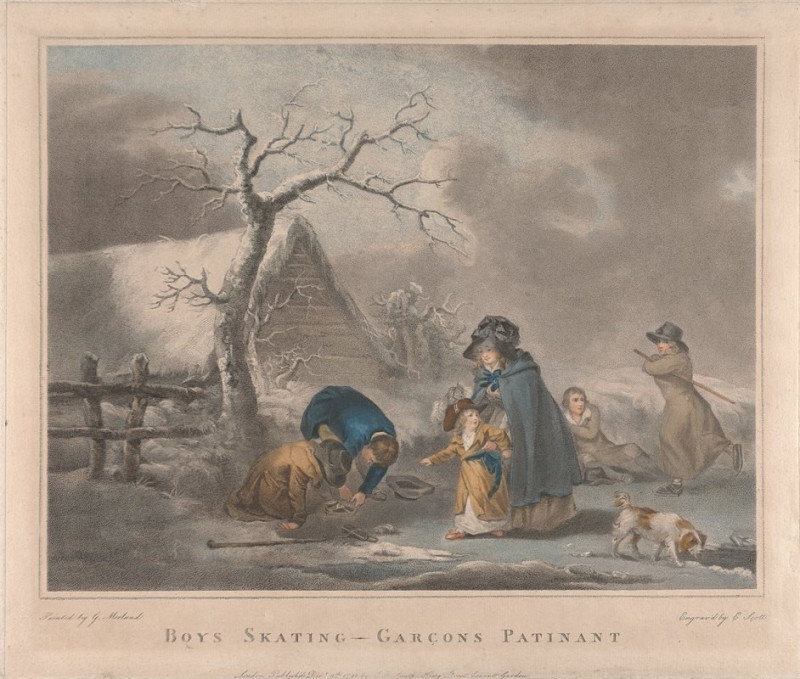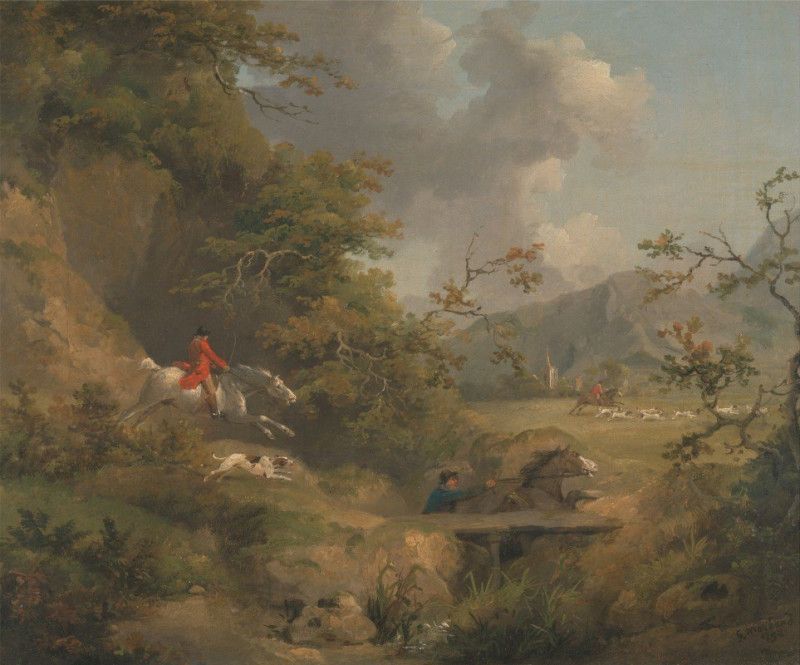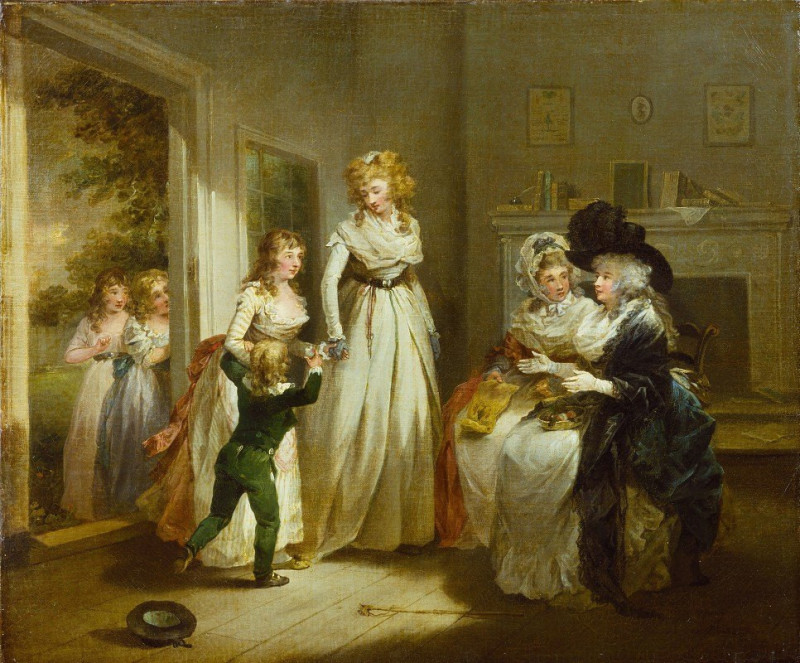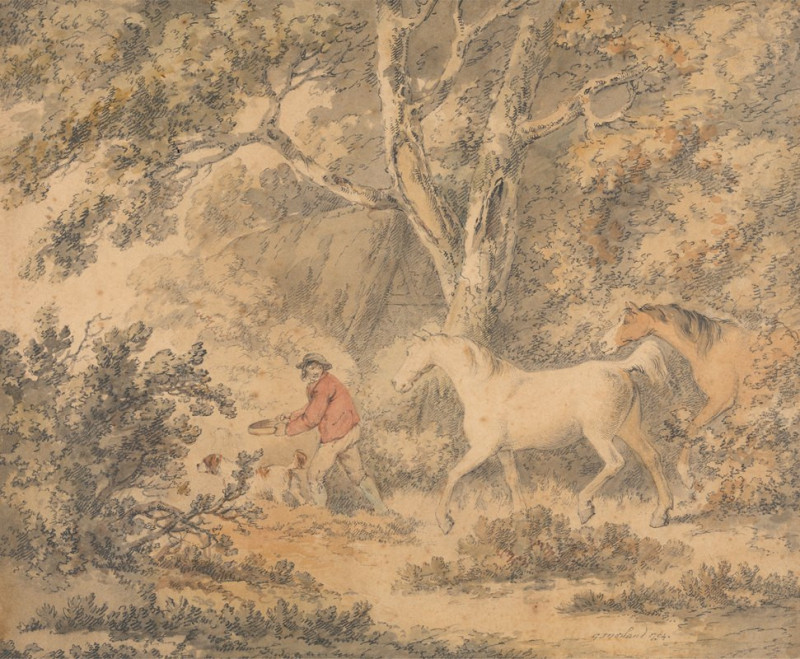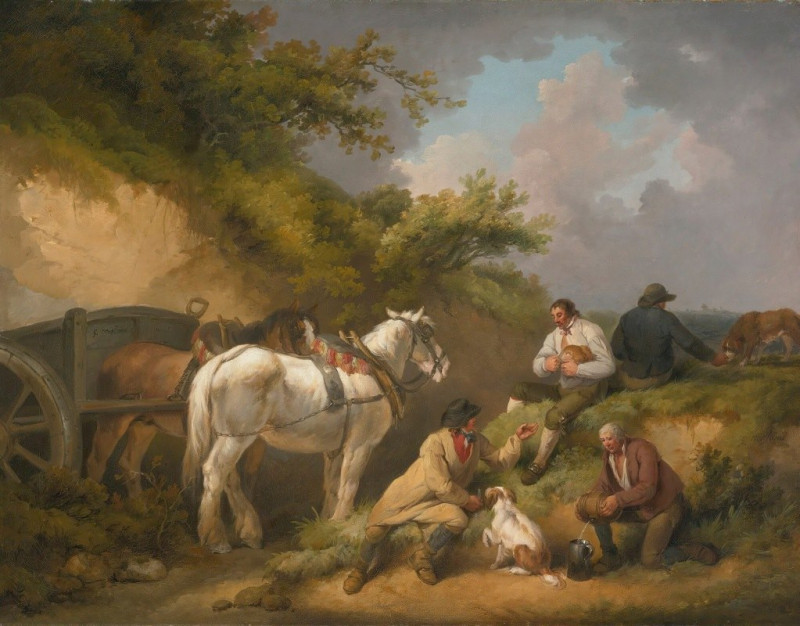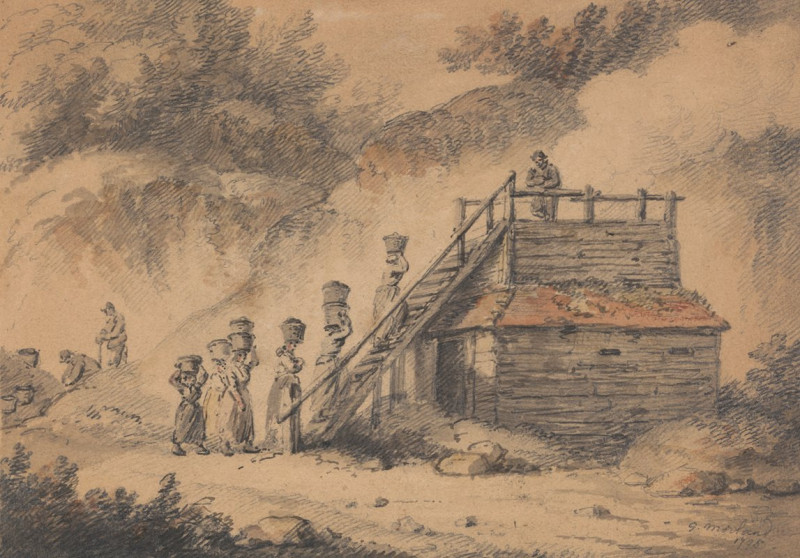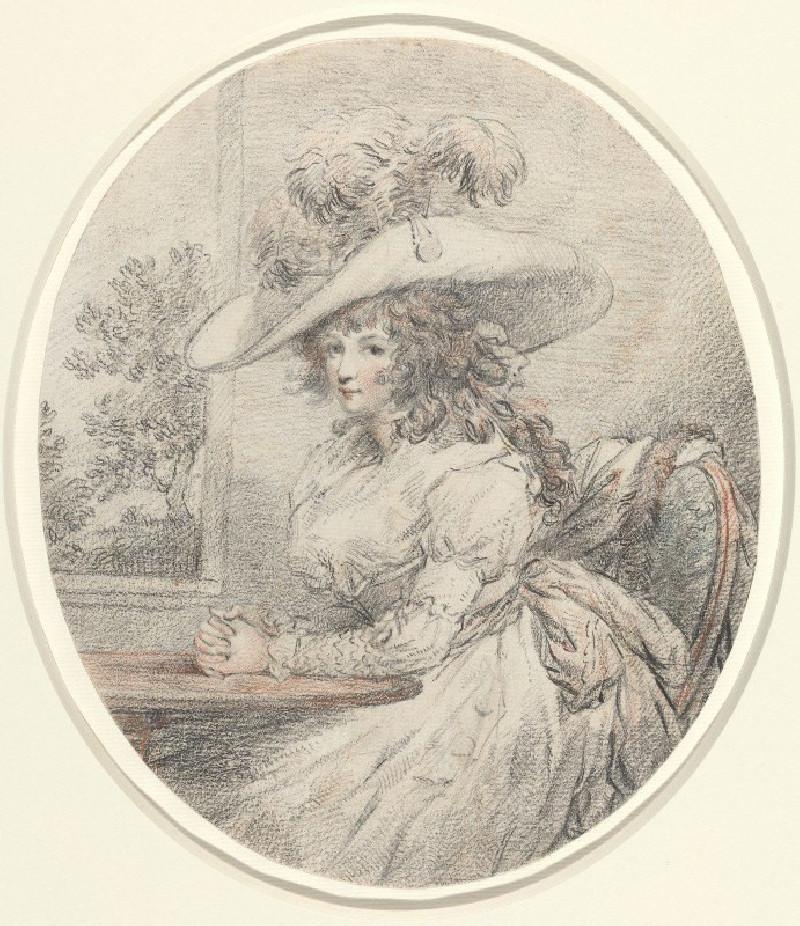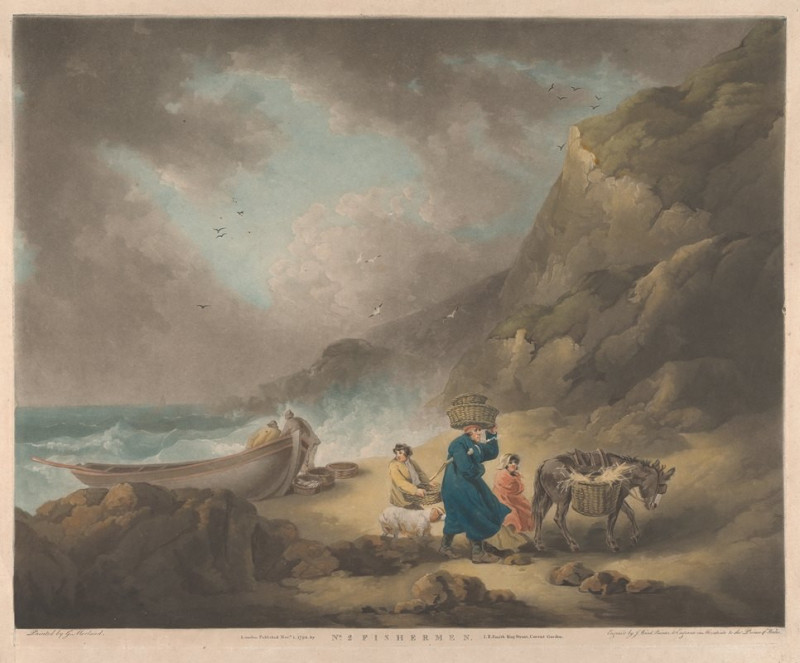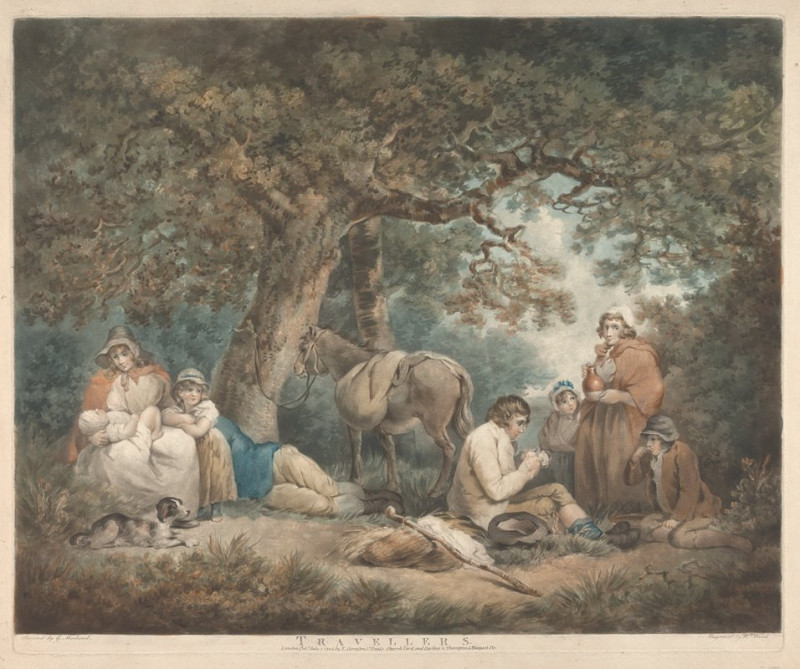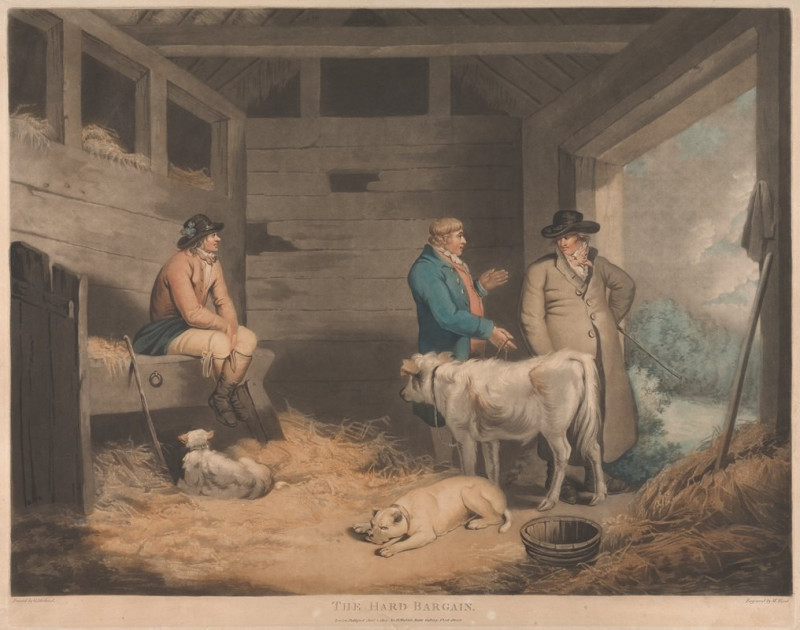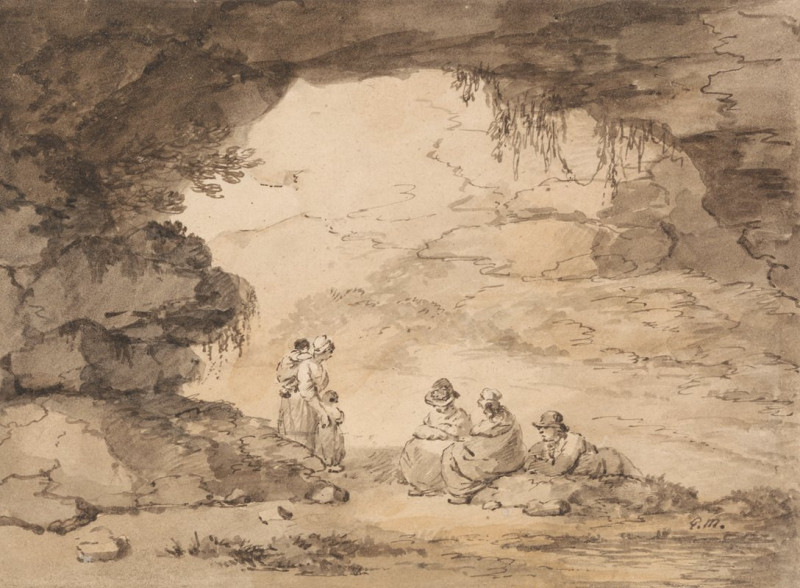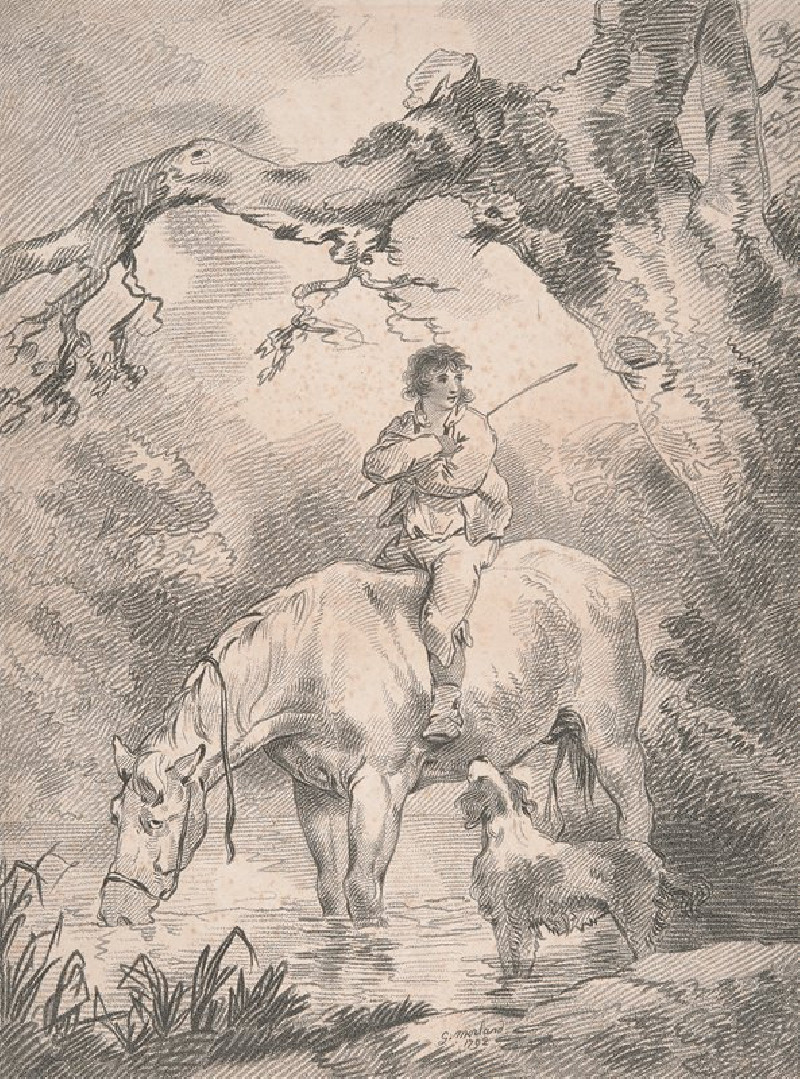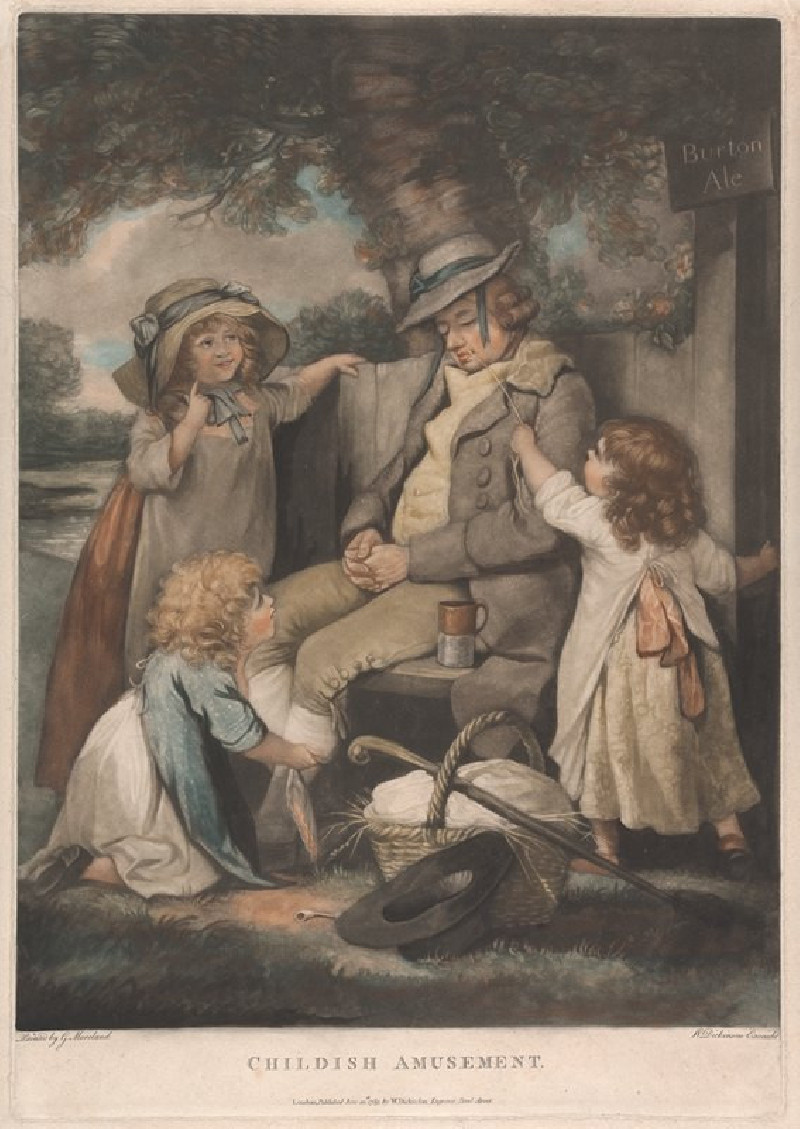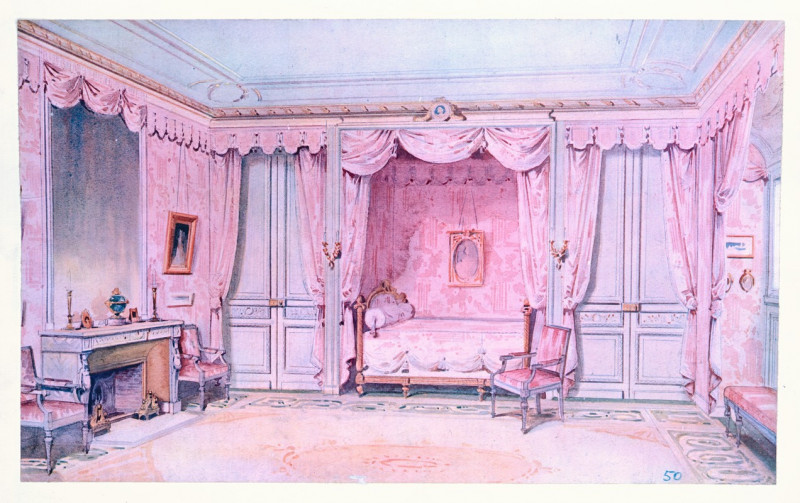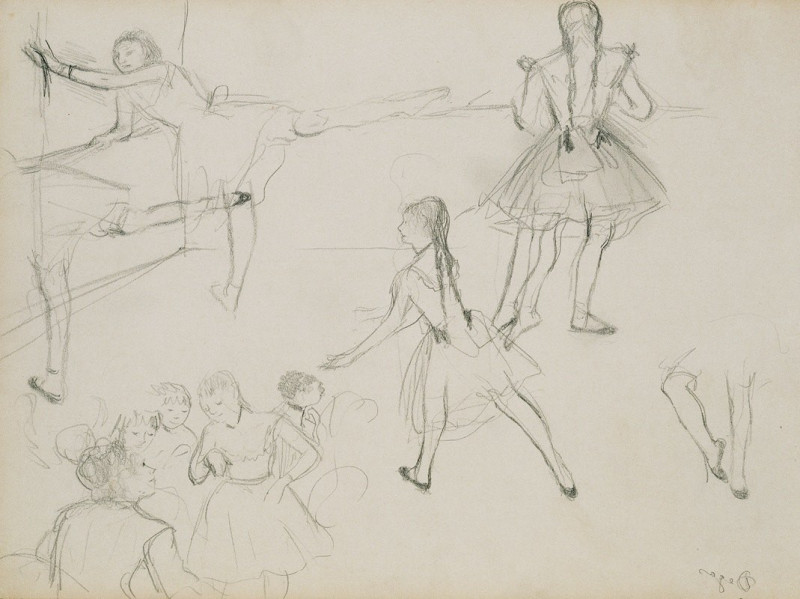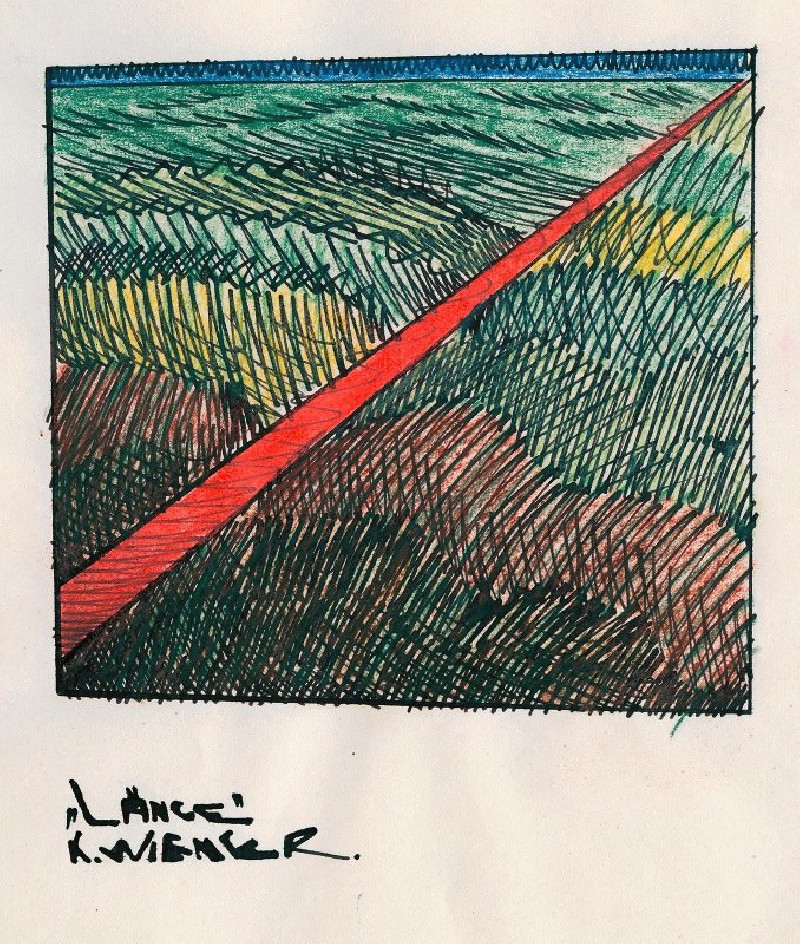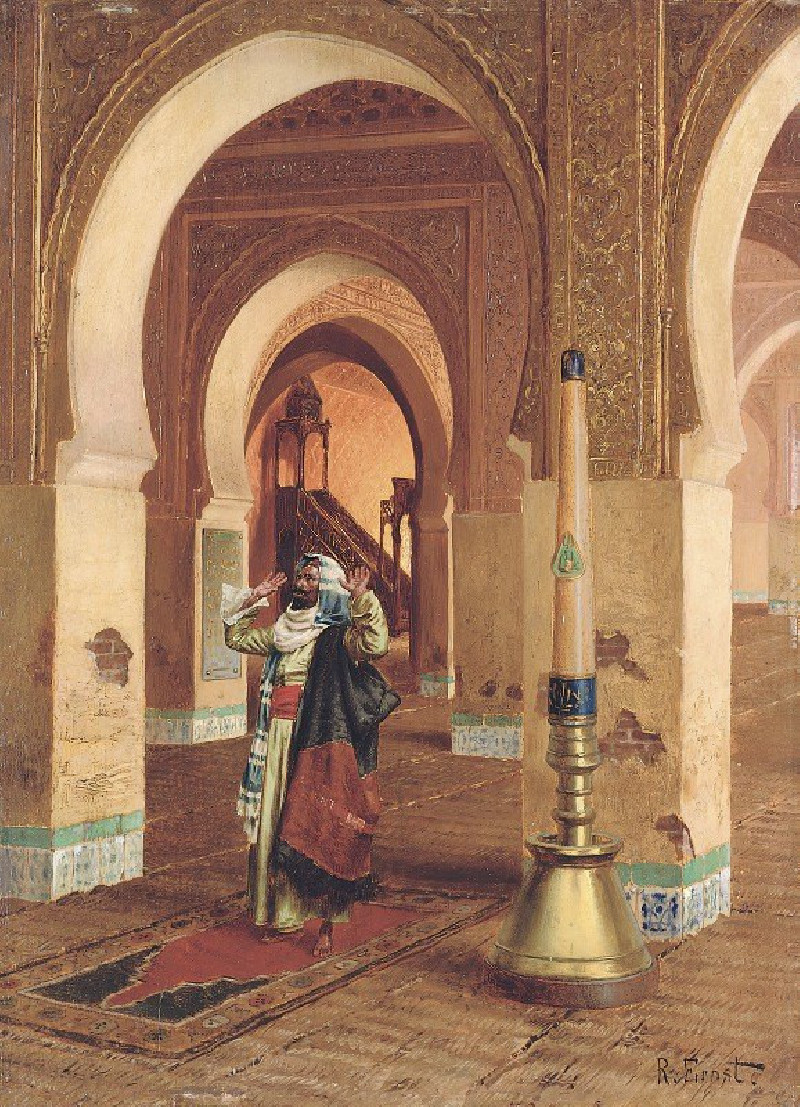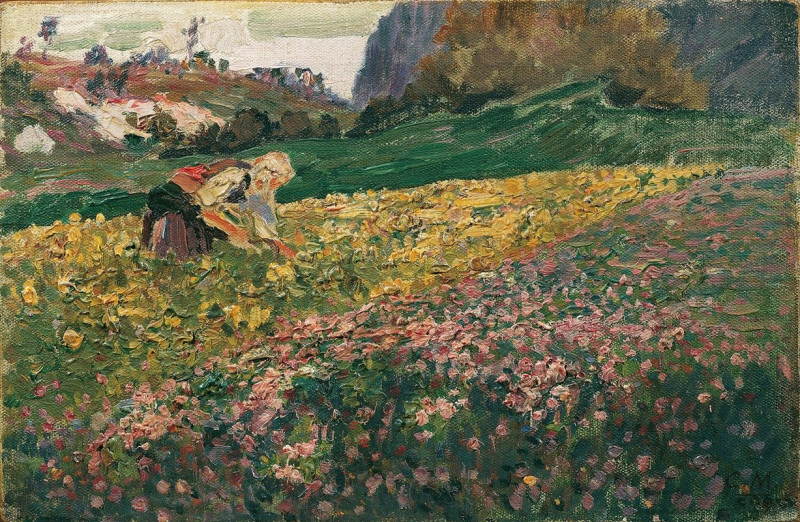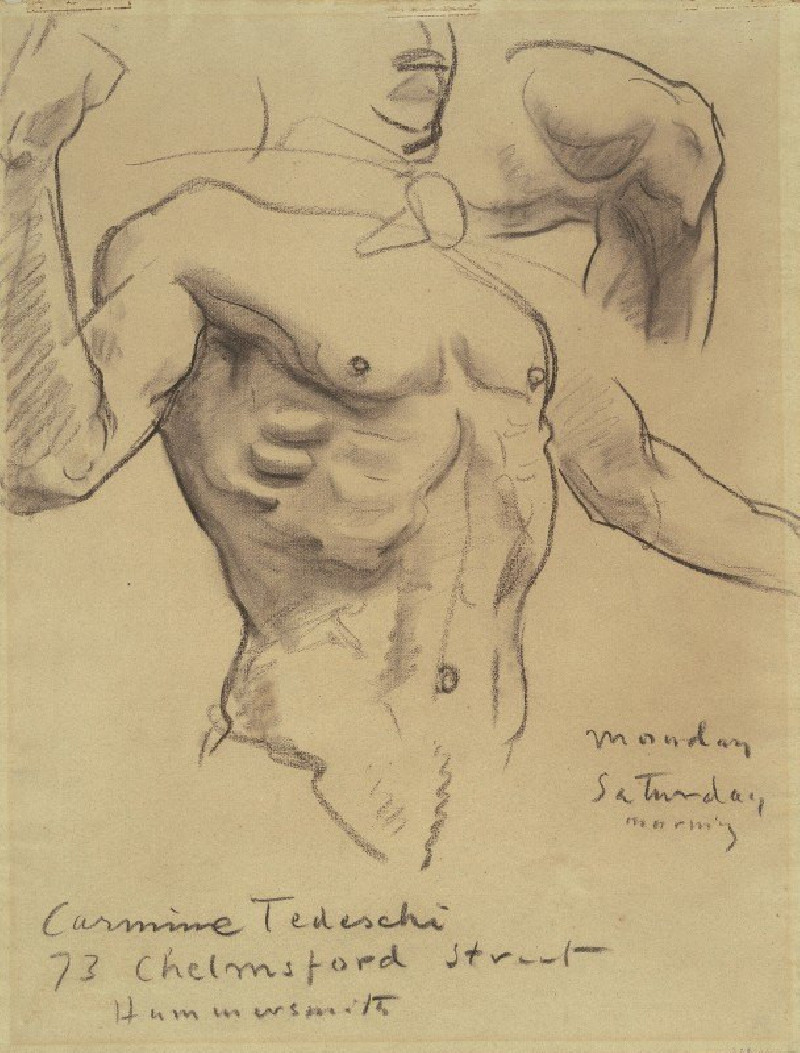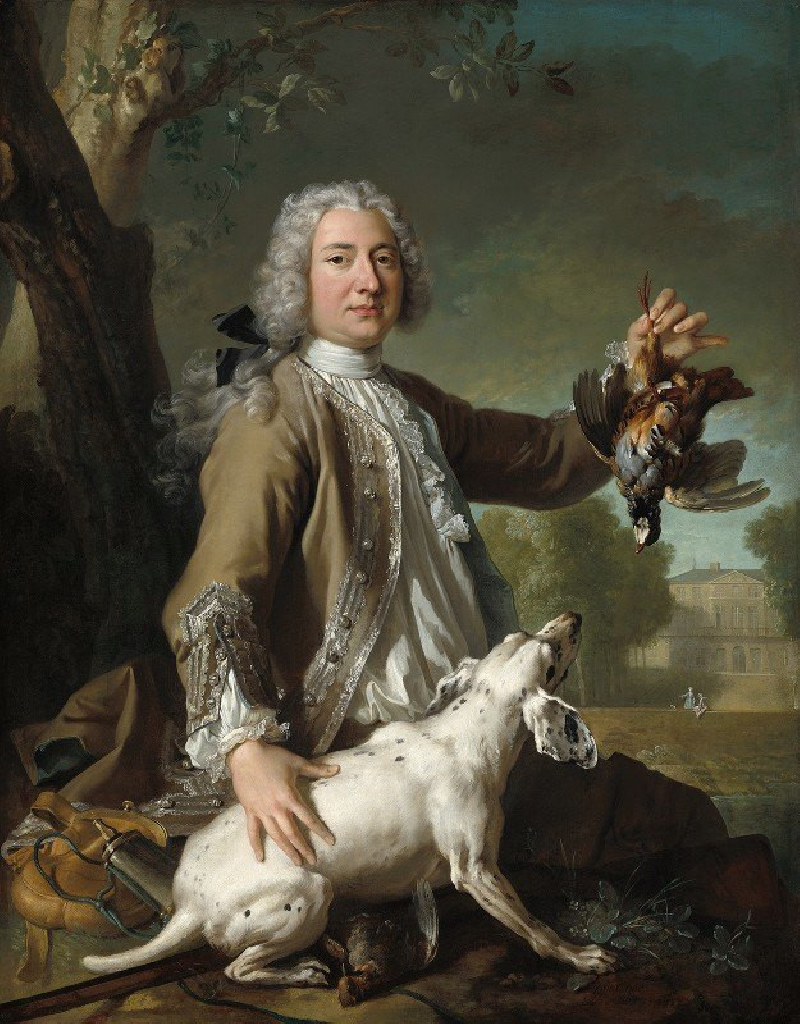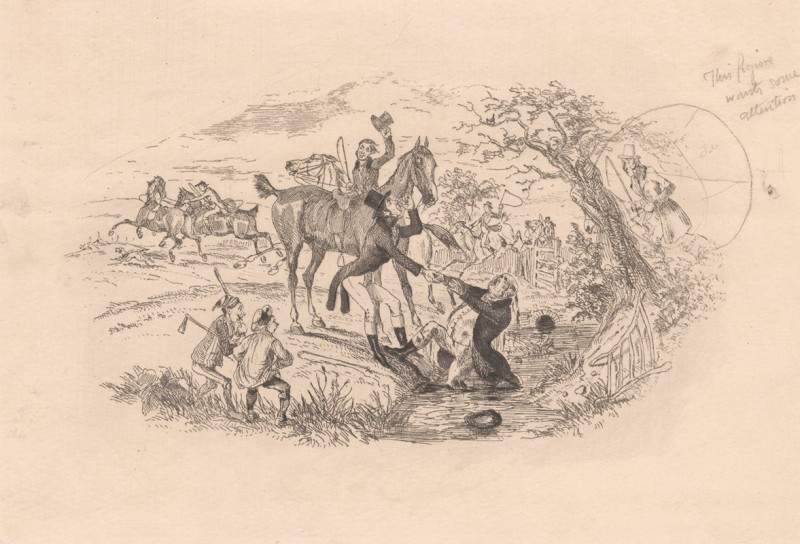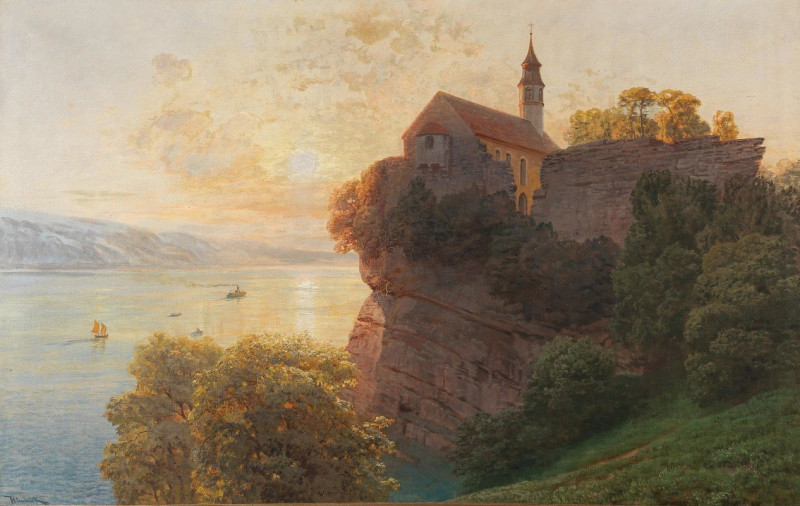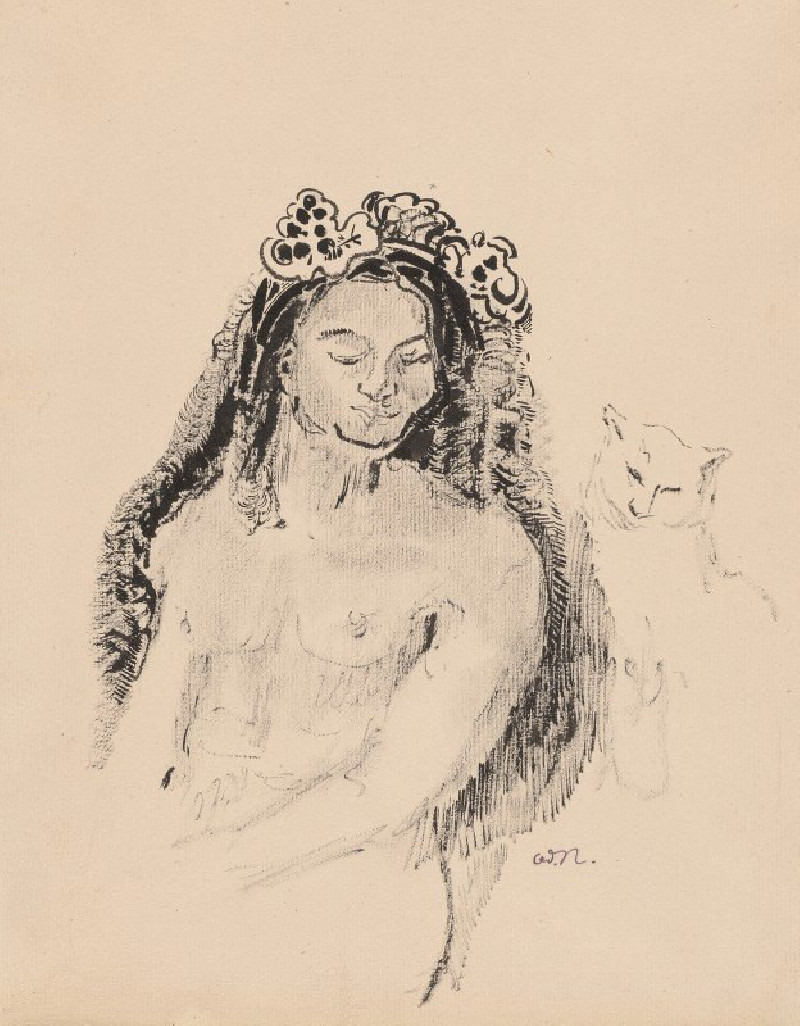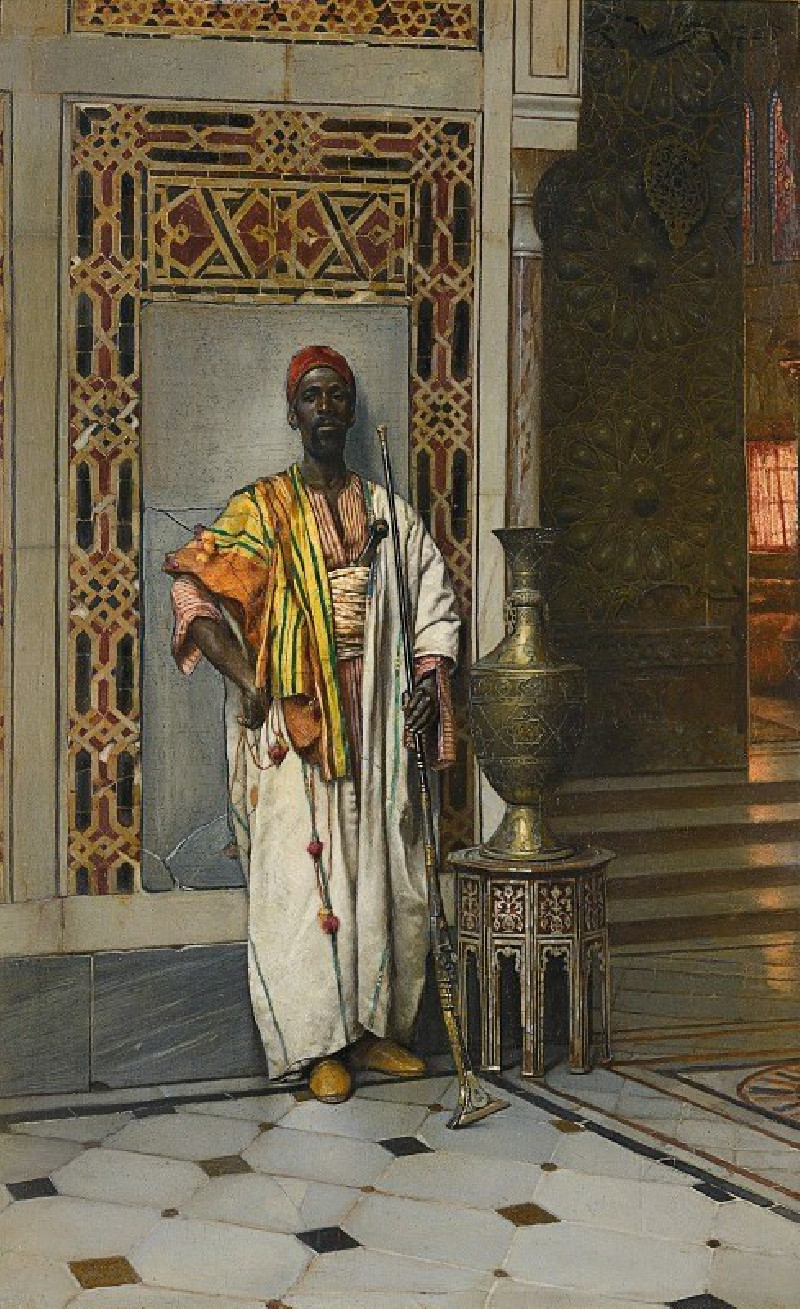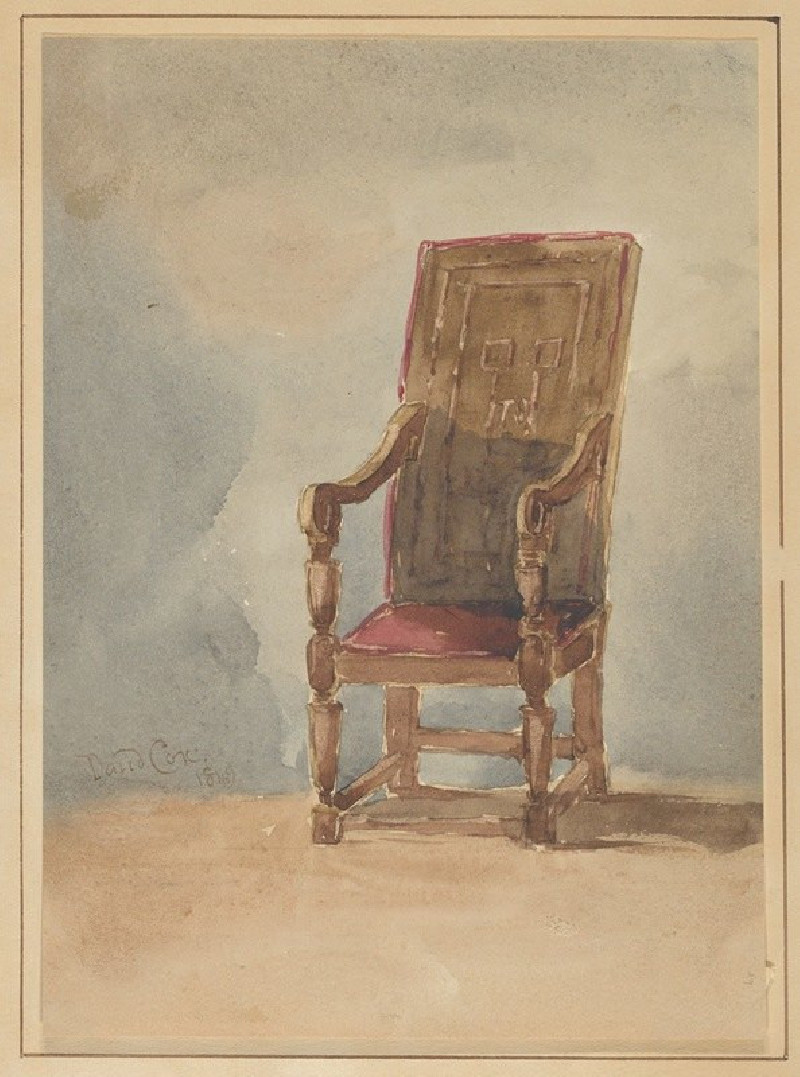Gypsy Encampment (1791)
Technique: Giclée quality print
Recommended by our customers
More about this artwork
Step into the world of George Morland's captivating painting "Gypsy Encampment," a meticulous depiction that offers a unique glimpse into the rustic life of the 18th century. Set in a secluded woodland, Morland skillfully portrays a group of gypsies amidst a moment of daily life, encapsulated in a serene yet vibrant setting.At the heart of the composition is a family, subtly illuminated by a warm, diffused light that filters through the trees, lending an almost ethereal quality to the scene. A young man, seated on the ground, engages with a child, their interaction suggesting a narrative of care and familial bond. To the side, another figure, likely an elder, rests against a large sack, embodying the weariness that comes with a nomadic lifestyle.The surrounding landscape is rich with detail, from the rugged textures of the bark to the soft, dappled ground, each element painted with precision. A campfire, indicated by a black pot suspended over faintly glowing embers, adds a focal point that hints at the group’s temporary pause in their travels.Morland's use of earthy tones and controlled brushwork not only highlights his mastery of light and shadow but also evokes a sense of tranquility and resilience amid the challenges of transient life. "Gypsy Encampment" is not merely a visual representation but a powerful narrative woven into the canvas, inviting viewers to reflect on the themes of community, survival, and the human connection with nature.This painting is a must-see for those who appreciate historical art that tells a story as much as it delights the eye.
Delivery
Returns
George Morland (26 June 1763 – 29 October 1804) was an English painter. His early work was influenced by Francis Wheatley, but after the 1790s he came into his own style. His best compositions focus on rustic scenes: farms and hunting; smugglers and gypsies; and rich, textured landscapes informed by Dutch Golden Age painting.

